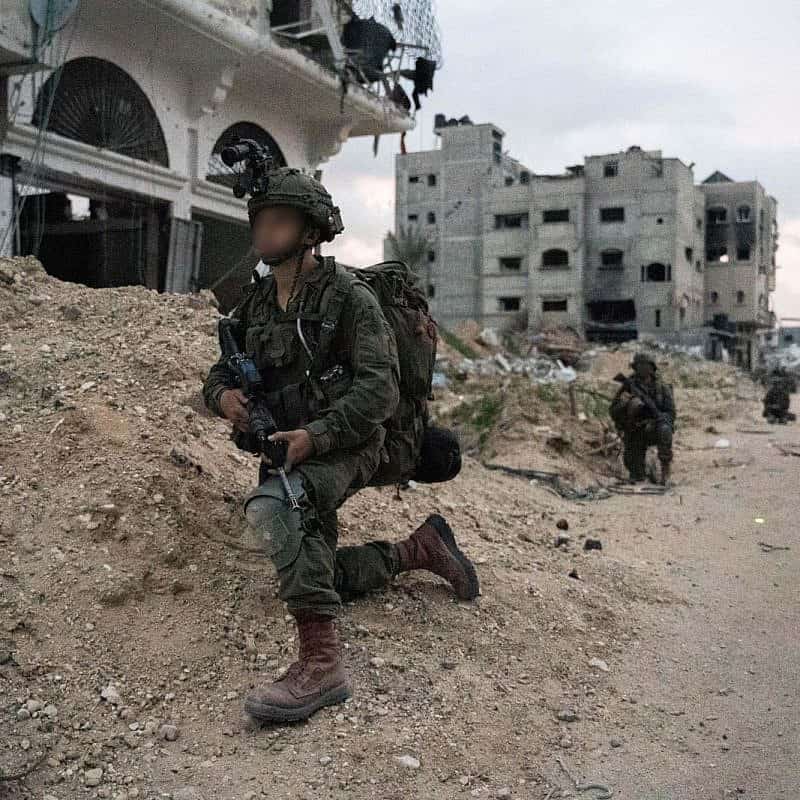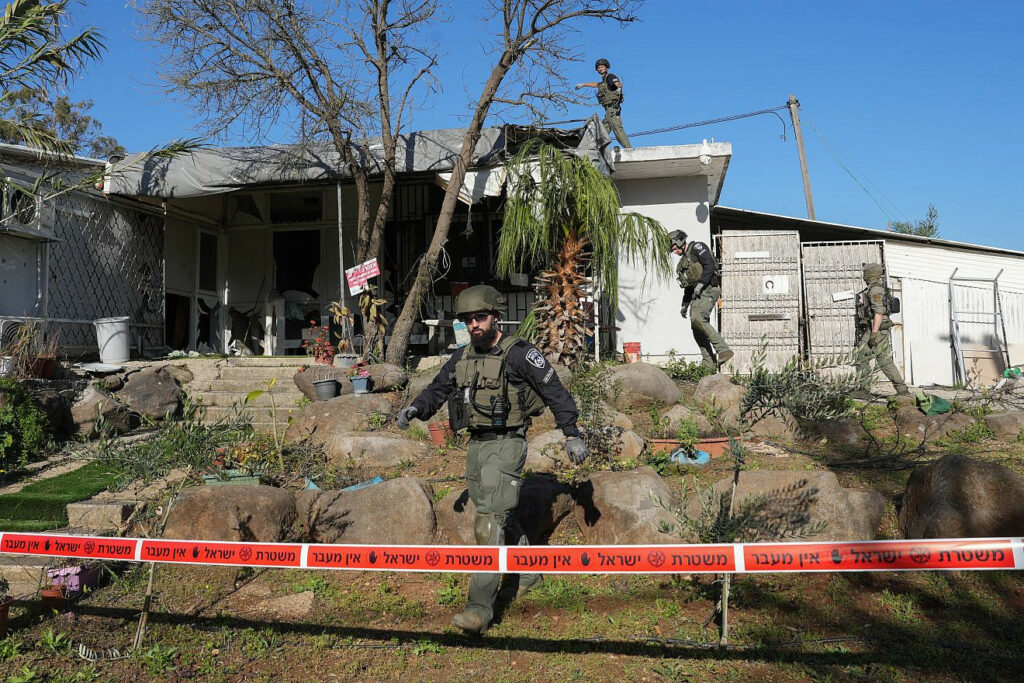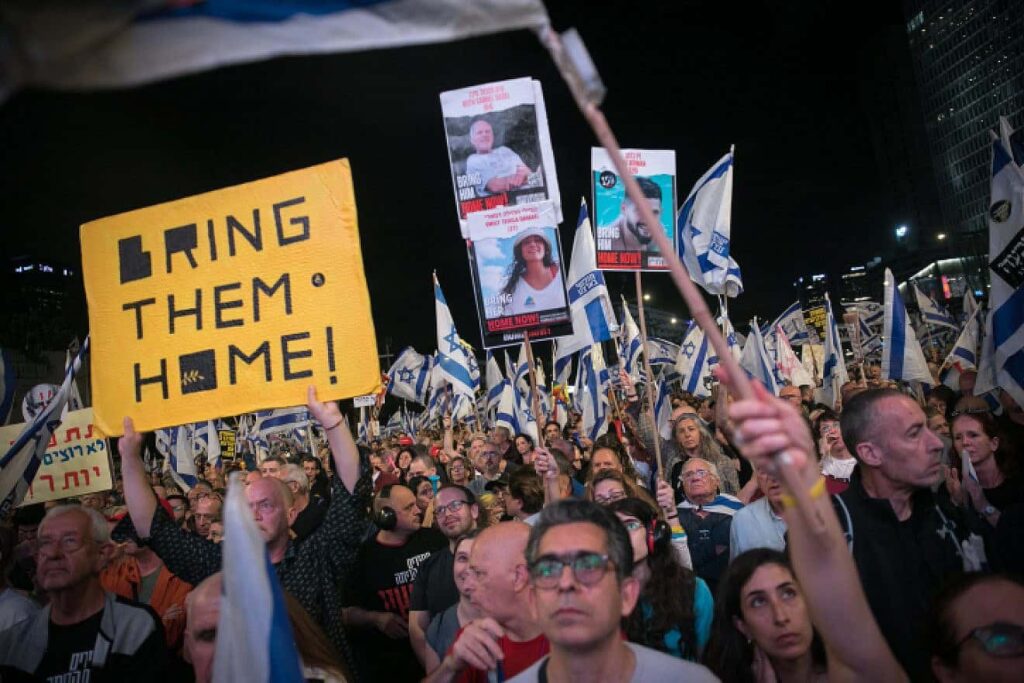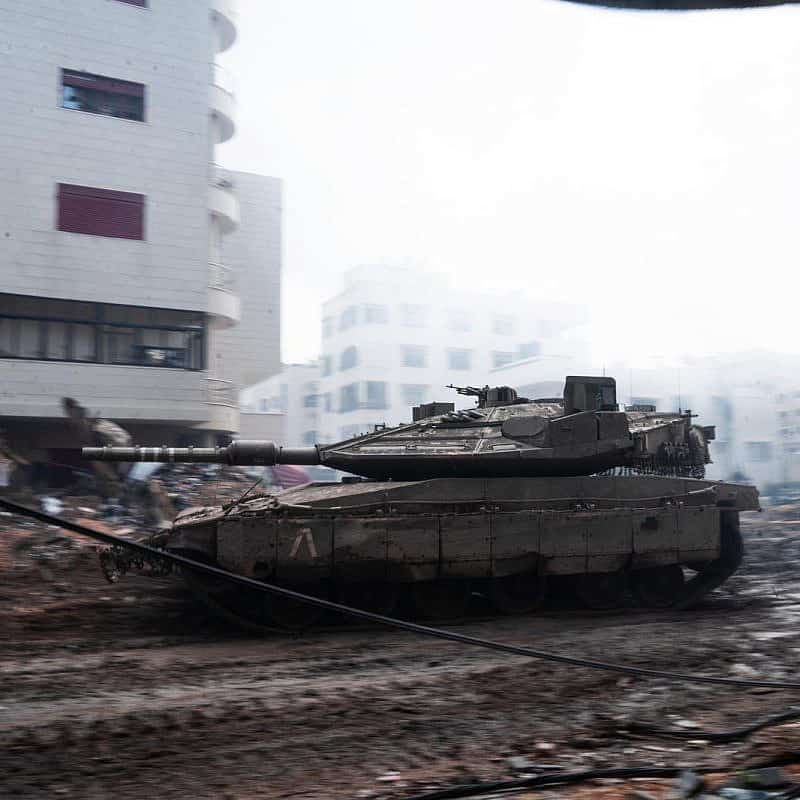
Six months into the war, Gaza could become secondary arena
Former IDF Military Intelligence chief Amos Yadlin: The problem is not Gaza. The problem is Iran
The war between Israel and Hamas in Gaza Strip and its accompanying medium-intensity conflict with Hezbollah carries the risk of becoming a regional war involving Hezbollah and its Iranian sponsor, according to a former head of Israel’s Military Intelligence Directorate.
“I think by now everybody understands the problem is not Gaza. The problem is Iran. Iran is behind all of this,” said Maj. Gen. (ret.) Amos Yadlin last week.
“Iran is enjoying the fact that Israel was diverted toward a front in Gaza. Most of the world is ignoring the fact that Iran continues to advance to a nuclear weapon,” said Yadlin, also a former deputy commander of the Israel Air Force and currently president and founder of MIND Israel, a nonprofit consulting team.
Speaking during an April 4 event organized by Media Central, a media liaison center based in Jerusalem, Yadlin said that Israel currently stands at a critical juncture.
“I want to go to the strategic level and to speak about the fact that today, maybe tomorrow, maybe next week, we can go to two different, different directions of this war,” he said.

One of these scenarios is the escalation of the conflict to a regional war “because of Iran, because of Hezbollah,” he continued. “It will move from Gaza to the north, from a limited war in Gaza to a regional war.”
Alternatively, the conflict could head “toward a process that will fix, [that] will de-escalate the war and will fix some of the problems. And we really are facing crucial days, maybe a week,” said Yadlin.
“Iran is threatening to attack Israel. Everyone in their leadership vowed revenge” for the killing on April 1 of Brig. Gen. Mohammad Zahedi, a top commander in Iran’s Islamic Revolutionary Guards Corps’ Quds Force responsible for Syria and Lebanon, in a strike on a building adjacent to the Iranian embassy in Damascus.
“The alleged [Israeli] strike in Damascus—Israel never took responsibility, but the Iranians blame Israel for the killing of [Mohammad Reza] Zahevi,” said Yadlin.
“He was the chief general of the Quds Force in Syria and Lebanon. Twenty years in this business of building Hezbollah and other forces which serve Iran in Lebanon and Syria. He was a member of the Hezbollah Shura [Council, the terror group’s central decision-making forum]. And he and some of his deputies and some of his officers were targeted in Damascus, not in the Iranian embassy, not in the Iranian consulate, but in areas that belong to Iran in Damascus,” he continued.
(Source: JNS)
Following Hamas’s Oct. 7 massacre, and since Hezbollah began firing on northern Israel, Israel “took off the gloves” regarding the Lebanese terrorist group. While Israel has spent years combating Iranian efforts to transfer weapons to Hezbollah and entrench itself in Syria, prior to Oct. 7 it was careful not to target Iranians, said Yadlin. However, when “Iran launched its proxies against Israel from Lebanon, from Syria, from Yemen, from Iraq, Israel changed the policy,” he added. “And in this case, it seems like a big hit to Iran. So the Iranians are thinking about revenging or deterring Israel.”
While he noted that Iran has attacked Israeli embassies in the past, in Buenos Aires, in New Delhi and Azerbaijan, he assessed that the likelihood of Iran retaliating in this way was low.
“If you’re listening to the Iranian music, they are looking for a more impressive attack,” he said. “And anyway, dealing with embassies [all] over the globe requires time,” he said. An additional complication is that if they carry out such an attack, “They will be violating the sovereignty of a third country. So the chances that this will be the Iranian move is not so high,” he said.
Iran could seek retaliation via Hezbollah, but that scenario too, he said. was not likely.
The Lebanese terrorist group has been “very careful not to escalate to a full-scale war,” over the past six months, he said. “Some of it may be because the Iranians don’t want to go to a full-scale war. But if Iran were to ask Hezbollah to take it up a notch, I guess that it will be answered with ‘why destroy Lebanon? It [the April 1 strike on Zahedi] was done. What happened, happened in Damascus, on Iranian soil. Maybe you [Iran] should take a step towards Israel.’”

As a result, Yadlin estimated that the most likely scenario is a direct Iranian attack on Israel, which carries the risk of escalation. He noted Iranian ballistic missile attacks on Pakistan and Islamic State in recent months, saying, “So if they can attack Pakistan with ballistic missiles, why not Israel? But not only ballistic missiles. In the Saudi case, they use cruise missiles and drones, the same drones that are attacking Ukraine in the last year.”
Yadlin stressed however that Israel has a highly advanced air defense system, which has already proven itself over the past six months.
“Don’t panic, don’t run to the shelters. Israel has a very, very good air defense, missile defense, rocket defense. It was one of the systems that has worked excellently in the last six months. Israel is attacked on a daily basis, from Lebanon, from Gaza, from Iraq, from Syria, from Yemen. And it’s not hermetic, but it’s [got] 95, 96, 97% [interception rates],” he said.
With regard to the second scenario, Yadlin said, “If the north is not going to explode,” this means de-escalation. “And this all has to do with the hostage deal,” he added.
“As we speak,” he said, negotiations are ongoing. “We are waiting for Hamas’s reply to new Israeli or Egyptian, Qatari and U.S. offers. If there is a hostage deal, then we have at least six weeks of ceasefire in the south, then ceasefire in the north, then maybe [implementing United Nations Security Council] 1701, remove Hezbollah from the border, a new 1701 that will be brokered by [U.S.] President [Joe] Biden,” he said. That scenario could be followed by normalization between Israel and Saudi Arabia, he continued.
Six months into the war, Israel has to examine the question of whether its war goals need to be updated, while sticking to the goal of ensuring that Hamas can never relaunch a devastating attack from Gaza again, he said.

In the north, he continued, “Hezbollah was beaten, but not enough. And the people will not go back without getting guarantees from diplomatic [elements] or [a] military move that Nasrallah cannot duplicate what Sinwar has done in the south.”
With regard to Hamas in Gaza, he said, “We have to tell the truth. You cannot change their hearts and minds. You cannot change their views. The population of Gaza is supporting them, but Hamas will be much weaker [after the war]. And who is there to control Hamas?”
Brig. Gen. (ret.) Ram Yavne, former head of the Strategic Division in the Planning Directorate of the IDF General Staff and a former senior intelligence officer in the IDF’s Northern Command, said that after a half of a year of war, Hamas no longer rules the Gaza Strip and its military capabilities have been severely damaged.
“Hamas is not the ruler anymore. It’s the ruler in specific points…where the IDF hasn’t operated. But in all the other areas, Hamas has been weakened dramatically and is not the ruler anymore,” he said.
Yavne, today a senior advisor at MIND Israel, said that Israel has reestablished some of its deterrence via the determination and capabilities it has displayed fighting against Hamas. By doing so, he said Israel has proven its abilities to take apart massive terror armies in urban areas.

This could have “some implications when speaking about deterrence in this region. But it’s something that we’ll have to see [in terms of what happens next],” he added.
“Another achievement, which is relative, of course, that we’ve made so far, is the release of some of the hostages. Until now, though, we are in a big challenge with respect to the others,” he added.
All members of Hamas’s leadership, even Sinwar, understand that it has been “hit severely,” said Yavne. “But still they have some assets, let’s put it that way. The first asset that they have, of course, is the hostages themselves, which enable them [Hamas] to demand various things,” including an Israeli ceasefire and withdrawal from Gaza,” he said.
Hamas still has “ some military capabilities in Gaza Strip and of course they’re trying [to build up capabilities] in other areas such as, such as the West Bank,” he added. Polls show that there is a relatively wide support for Hamas among Palestinians despite the devastation that it has brought to Gaza, he noted.
Yavne outlined four scenarios for the future of Gaza: Israeli military control, chaos, the return of a weakened Hamas and the establishment of a new ruling regime, which he argued would be the Palestinian Authority.
Regarding Rafah, Yavne said the future operation by Israel in the last Hamas stronghold would be designed to take apart Hamas’s four battalions in the area, and to stop the smuggling of weapons from Egypt into Gaza in the future.
If this “isn’t handled,” he cautioned, “there is a good chance that Hamas would do every effort to build up its power back.”
The post Six months into the war, Gaza could become secondary arena appeared first on Israel365 News.
Israel in the News